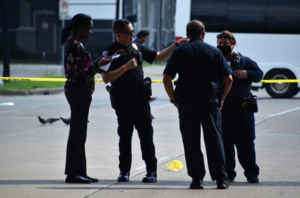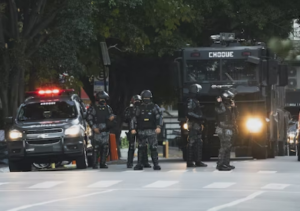Establishing a short-term incident command location for a major event is a critical task that police administrators should approach with careful consideration. It allows for the rapid deployment of resources and facilitates the exchange of critical information among responding agencies. It also provides a central location for managing logistics, such as equipment and supplies, which can help to ensure that resources are deployed effectively and efficiently. Here are a few basic considerations that can be used by first-line supervisors when selecting an Incident Command location.
- Proximity to the incident site: While there’s no one-size-fits-all answer, choose a location that is close enough to the incident site to allow for effective communication and response while ensuring the safety of the command personnel. This will allow command staff to quickly assess the situation, gather intelligence, and provide resources and support to the responders on the scene. Ideally, this location has a good vantage point or available technology to help commanders assess the situation and make informed decisions.
- Safety and security: Administrators should evaluate the location for any potential hazards, such as traffic, weather, or nearby facilities that could pose a threat. Access control, physical security measures, and emergency planning should also be in place. Conduct a physical security sweep of the premises and establish a manned perimeter.
- Size and Space: Selecting an appropriate Incident Command location must also take into account the spatial needs of multiple responding agencies. In past incidents, it has been observed that different agencies tend to bring their own mobile command centers, leading to a lack of coordination. Therefore, proper site selection, which allows sufficient space for all participating agencies, not only facilitates clear lines of communication but also provides a structured framework for the Incident Command system, ensuring a more effective response to complex incidents. This aspect of coordination and spatial planning is vital to the success of an incident response strategy.
- Traffic patterns: The location should have convenient access to the event area and be easily accessible for responding personnel and equipment. Administrators should consider traffic patterns, parking availability, and road closures to ensure that the command location is easily accessible and does not impede emergency response.
- Technological Capabilities: Setting up a roadside Incident Command doesn’t need to be overly complex, and sometimes, it starts with a single officer using the hood of a patrol car as an improvised command post. As the incident evolves and demands more comprehensive coordination, identify a dedicated Incident Command location with the requisite technological capabilities for sustained operations. Such a location should ideally offer access to power outlets, phone lines, fiber cables, and other essential infrastructure, ensuring seamless and long-term support for the incident management needs. This scalability in response allows for a gradual transition from a simple setup to a more technologically equipped command post as circumstances warrant.
By following these general principles, police administrators can establish a framework for selecting suitable locations and enhance their likelihood of a successful response.


